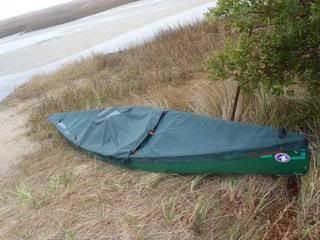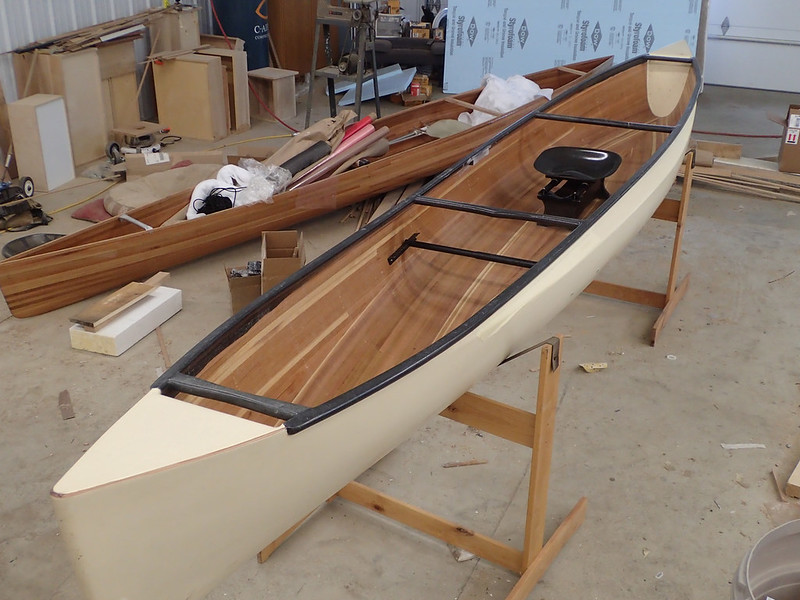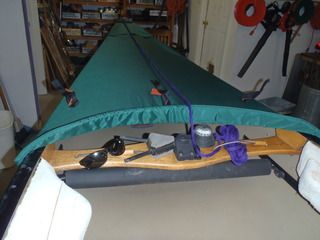The spray decks were really nice for protecting the packs. No paddle drips on the front pack and it was nice, after paddling in the rain all day, to have mostly dry packs; except for the bottom that was in contact with the hull. To keep the the gear pack off the bottom of the canoe I started storing my yoke underneath it. This kept the pack completely dry and raised it just proud of the gunwales, which kept an arch in the spray deck.
I am a huge fan of custom/purpose designed partial spray covers. Maybe the “partials” specificity is because I am uncomfortable when wraptrapped in a full spray skirt, I don’t like the entry/exit complications (or potential entanglement), much prefer to have some open area in front of the seat for between the knees gear, and for getting in and out, especially at awkward landings. And I really want an open space behind the seat for reach behind and retrieve day gear accessibility on the fly.
Spray covers are valuable beyond just keeping rain out. On thick swampy trips (or simply scooting under head high strainers. . . . “Oh crap, that’s lower than I thought” as I peel off bark and beetles with the back of my PFD) the partial covers help keep the foliage and critters out of the canoe. Busting through dense wood and brush in summer deposits a lively insectarium of leaves, twigs and bugs inside the hull. That debris is fugly on smushed on gear and worse when puncturing floatation bags.
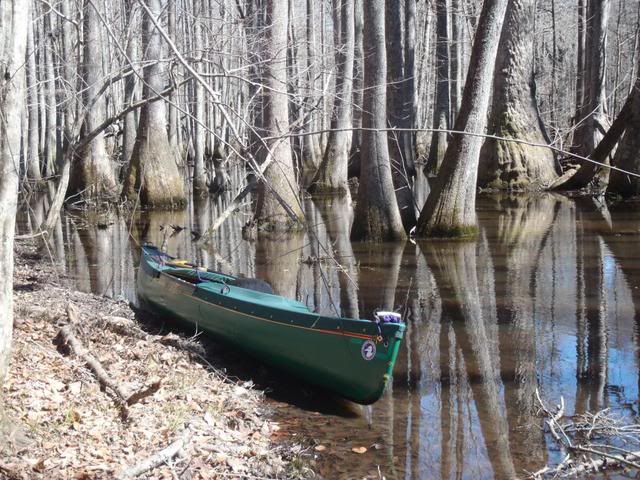
In no-shade open water baking sun trips even partial covers shade the gear load and keep the underside cooler, especially if the water temperature is well below the air temperature. That alone is a boon on open waters and desert rivers.
I’m looking forward to the spray cover functionality design on the Bloodvein III. Rain sheltered “awning” for Sadie? Map case attachment? Paddle pocket? That is a big blank canvas on top to work with.

Maybe a little raised lip along the open ends of the covers to help drain water over the gunwales? The partials CCS made for two of our canoes have a Blackfeather-ish raised lip (strip of thin minicel sewn into the hem) that drains rain and paddle drips over the gunwales perfectly.
Bow partial
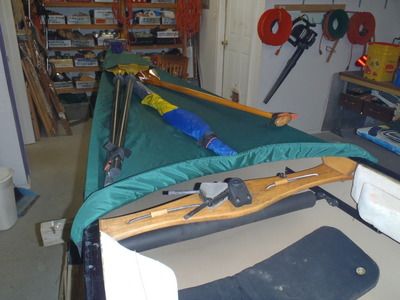
Stern partial
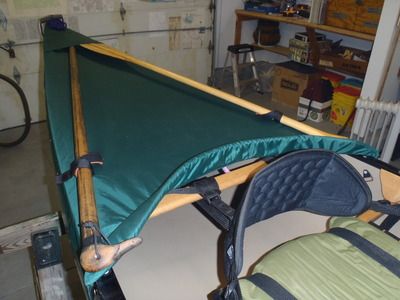
Gawd bless a paddle pocket and strap or three. Double, bent single and sail on the bow, straight single and hiking staff/boat hook/push pole/tarp pole on the stern. More choices than I am ever likely to carry on a single trip.
Center storage cover installed. Probably unnecessary for true wilderness tripping, but if I am daytripping from a site I like having the paddling gear encased in the canoe dry and ready to go. Especially if it is a long trek into camp; I really don’t need to haul my paddles, PFD, seat pad, back band, spongebailerthrowbag up to camp to keep them dry and contained. And then haul them all back down the next morning.
A partial partial cover to occlude the open area(s) of the hull is worth an extra ounce or two as an in-camp storage cover.
